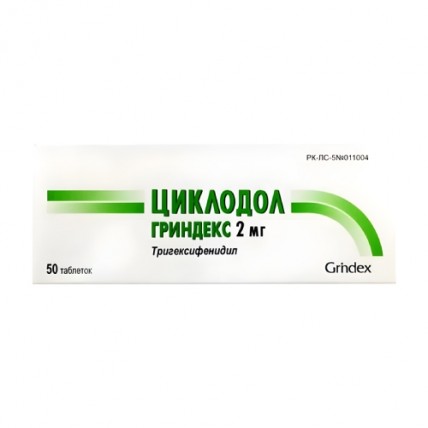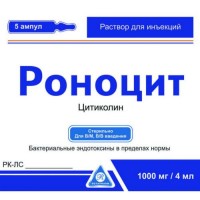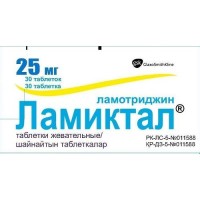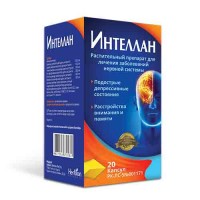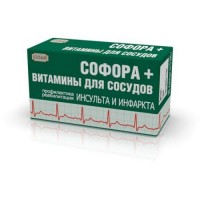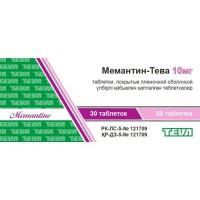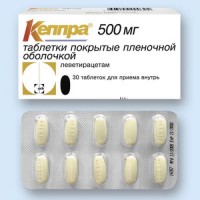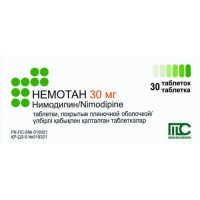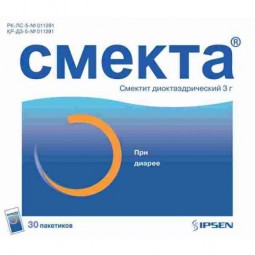Cyclodol (Trihexyphenidyl) 2 mg, 50 tablets
- $10.00
What is Cyclodol (Trihexyphenidyl)?
Cyclodol (Trihexyphenidyl) is an anticholinergic medication used primarily to manage symptoms of Parkinson's disease and to treat movement disorders caused by certain medications, especially antipsychotic drugs. It helps alleviate muscle stiffness, tremors, and spasms, which are common in Parkinson’s disease, improving mobility and allowing for better daily functioning. In addition to its use in Parkinson's disease, Cyclodol is also prescribed to control drug-induced extrapyramidal symptoms, which include involuntary muscle movements, restlessness, and rigidity, commonly caused by central nervous system (CNS) medications such as phenothiazines.
Cyclodol works by blocking acetylcholine, a neurotransmitter that contributes to muscle control. By doing so, it restores the balance of neurotransmitters in the brain, helping to reduce abnormal muscle movements.
How should Cyclodol be used?
Cyclodol is available in 2 mg tablet form, and the dosage is carefully personalized by a healthcare provider. For Parkinsonism, the typical starting dose is 1 mg on the first day, which is then gradually increased by 2 mg every 3 to 5 days until an optimal daily dose is reached, usually between 6 mg and 10 mg per day. The total daily dose is often divided into 3 doses taken with meals. In severe cases, such as post-encephalitic Parkinsonism, higher doses up to 12-15 mg may be needed. However, dosages above 10 mg are generally divided into four doses throughout the day, with the last dose taken before bedtime to help manage nighttime symptoms.
For drug-induced extrapyramidal symptoms (such as muscle stiffness or uncontrolled movements caused by medications like antipsychotics), the required dose typically ranges from 5 mg to 15 mg daily. In some mild cases, a dose as low as 1 mg may be sufficient to control symptoms. The dose is adjusted based on the individual’s response, and therapy is often started with a low dose and increased as needed.
Who should not take Cyclodol?
Cyclodol is contraindicated in several medical conditions due to its anticholinergic effects. Individuals with the following conditions should not take Cyclodol unless specifically advised by a healthcare provider:
- Hypersensitivity to trihexyphenidyl or any of the inactive ingredients in the formulation.
- Urinary retention or a history of benign prostatic hyperplasia (enlarged prostate), particularly if it results in incomplete bladder emptying.
- Narrow-angle glaucoma, a condition where increased pressure in the eye can lead to blindness.
- Gastrointestinal obstructions or intestinal blockages.
- Severe cardiovascular conditions, such as tachyarrhythmia (irregular, fast heart rate), as Cyclodol can exacerbate these symptoms.
- Severe liver or kidney dysfunction, as the drug’s metabolism and excretion may be impaired.
- Psychiatric disorders such as acute delirium or mania, or a history of psychosis or dementia.
- Tardive dyskinesia, a serious movement disorder often caused by long-term antipsychotic use, as Cyclodol may worsen this condition.
- Alcohol or drug intoxication, particularly with opioids or psychotropic medications, where the drug could increase the risk of harmful side effects.
Additionally, Cyclodol should not be given to children and adolescents under 18 years of age, nor to individuals with rare hereditary conditions such as fructose intolerance, glucose-galactose malabsorption, or sucrase-isomaltase deficiency, as the tablets contain sugar.
What precautions should be taken before using Cyclodol?
Before starting Cyclodol, it is essential to discuss any existing health conditions or medications with your doctor, as it can interact with various drugs and exacerbate certain conditions. Special caution should be taken in the following situations:
- Elderly patients are more sensitive to the side effects of Cyclodol, especially those with cardiovascular disease, as it may lead to tachycardia or other heart-related issues.
- Patients with liver or kidney disease should be monitored closely, and their dose may need to be adjusted to prevent toxic buildup in the body.
- Patients with conditions that could lead to dangerous tachycardia (fast heart rate) or those with myasthenia gravis (a muscle-weakening condition) should be monitored closely, as Cyclodol can worsen these issues.
- Dementia patients, especially those with symptoms of senility, should be closely observed, as the medication may exacerbate cognitive impairments.
It is important to note that Cyclodol does not alleviate symptoms of tardive dyskinesia, and in some cases, it may worsen them. Therefore, the use of Cyclodol in patients with tardive dyskinesia should be limited unless the patient also has Parkinson’s disease.
Additionally, there have been reports of Cyclodol abuse, particularly among psychiatric patients, due to its hallucinogenic and euphoria-inducing effects. The potential for dependence exists, and it is important not to abruptly discontinue treatment, as sudden withdrawal can worsen symptoms.
What drug interactions can occur with Cyclodol?
Cyclodol may interact with several medications, enhancing their effects or causing adverse reactions. Key interactions include:
- Central Nervous System (CNS) depressants: Using Cyclodol with substances like cannabis, barbiturates, opioids, or alcohol can enhance the depressant effects, increasing the risk of overdose or abuse. Alcohol can also accelerate the metabolism of Cyclodol, reducing its effectiveness.
- Other anticholinergic medications: Combining Cyclodol with other anticholinergics (e.g., tricyclic antidepressants, monoamine oxidase inhibitors) can increase side effects like dry mouth, blurred vision, and difficulty urinating. It can also cause severe drowsiness.
- Levodopa: When used together with levodopa, an antiparkinson drug, dosages of both may need to be reduced to prevent excessive involuntary movements.
- Antipsychotics: Cyclodol should be used cautiously with antipsychotic drugs, particularly phenothiazines, as it may worsen drug-induced movement disorders and increase the risk of tardive dyskinesia.
- Prokinetic agents (e.g., metoclopramide, domperidone): Cyclodol can oppose their effects, reducing gastrointestinal motility.
- Magnesium hydroxide: This antacid can interfere with the absorption of Cyclodol, so doses should be spaced at least 2 hours apart.
What are the possible side effects of Cyclodol?
Cyclodol is associated with a range of side effects, most of which stem from its anticholinergic action:
- Common side effects: These include dry mouth, blurred vision, constipation, and difficulty urinating, experienced by 30% to 50% of patients. These effects often lessen with continued use.
- CNS effects: Patients may experience dizziness, nervousness, confusion, memory impairment, or even hallucinations and delirium. Elderly patients are particularly susceptible to cognitive disturbances.
- Ocular effects: Cyclodol can cause mydriasis (dilated pupils), cycloplegia (paralysis of the eye’s accommodation), and may increase the risk of narrow-angle glaucoma.
- Cardiovascular effects: Tachycardia (rapid heartbeat) is a potential side effect, and patients should be monitored for any signs of heart irregularities.
In rare cases, serious allergic reactions or heat stroke due to reduced sweating can occur. Patients should avoid prolonged exposure to hot environments and seek medical attention if they experience signs of overheating.
Can Cyclodol be taken during pregnancy or while breastfeeding?
The safety of Cyclodol during pregnancy or breastfeeding has not been established. There is no data from human studies on whether Cyclodol can harm the developing fetus or affect reproductive capabilities. Therefore, the drug should only be used during pregnancy if the potential benefits outweigh the risks.
As it is unknown if Cyclodol passes into breast milk, caution is advised when prescribing it to breastfeeding mothers. Like other anticholinergic medications, Cyclodol may reduce milk production and potentially affect the infant. It is generally recommended to avoid its use during breastfeeding unless absolutely necessary.
How should Cyclodol be stored?
Cyclodol should be stored at room temperature, below 25°C (77°F), in a dry, light-protected place.
Always keep the medication out of reach of children.
Ensure the drug is not used beyond its expiration date to guarantee safety and efficacy.
